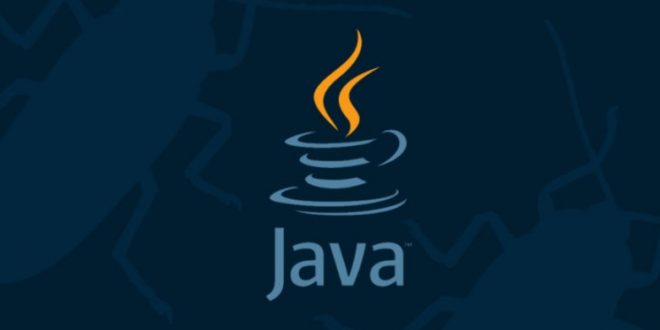Modifiers
Bây giờ, bạn đã khá quen thuộc với publictừ khóa xuất hiện trong hầu hết các ví dụ của chúng tôi:
public class Main
Các publictừ khóa là một access modifier , có nghĩa là nó được sử dụng để thiết lập mức độ truy cập cho các lớp, các thuộc tính, phương pháp và xây dựng.
Chúng tôi chia các bổ ngữ thành hai nhóm:
- Access Modifier – kiểm soát mức độ truy cập
- Non-Access Modifiers – không kiểm soát cấp độ truy cập, nhưng cung cấp chức năng khác
Truy cập công cụ sửa đổi
Đối với các lớp , bạn có thể sử dụng một trong hai publichoặc mặc định :
| Modifier | Description | Try it |
|---|---|---|
public | The class is accessible by any other class | Try it » |
| default | The class is only accessible by classes in the same package. This is used when you don’t specify a modifier. You will learn more about packages in the Packages chapter | Try it » |
Đối với attributes, methods và constructors , bạn có thể sử dụng một trong các cách sau:
| Modifier | Description | Try it |
|---|---|---|
public | The code is accessible for all classes | Try it » |
private | The code is only accessible within the declared class | Try it » |
| default | The code is only accessible in the same package. This is used when you don’t specify a modifier. You will learn more about packages in the Packages chapter | Try it » |
protected | The code is accessible in the same package and subclasses. You will learn more about subclasses and superclasses in the Inheritance chapter | Try it » |
Công cụ sửa đổi không truy cập
Đối với classes, bạn có thể sử dụng một trong hai finalhoặc abstract:
| Modifier | Description | Try it |
|---|---|---|
final | The class cannot be inherited by other classes (You will learn more about inheritance in the Inheritance chapter) | Try it » |
abstract | The class cannot be used to create objects (To access an abstract class, it must be inherited from another class. You will learn more about inheritance and abstraction in the Inheritance and Abstraction chapters) | Try it » |
Đối với attributes và methods , bạn có thể sử dụng một trong các cách sau:
| Modifier | Description |
|---|---|
final | Attributes and methods cannot be overridden/modified |
static | Attributes and methods belongs to the class, rather than an object |
abstract | Can only be used in an abstract class, and can only be used on methods. The method does not have a body, for example abstract void run();. The body is provided by the subclass (inherited from). You will learn more about inheritance and abstraction in the Inheritance and Abstraction chapters |
transient | Attributes and methods are skipped when serializing the object containing them |
synchronized | Methods can only be accessed by one thread at a time |
volatile | The value of an attribute is not cached thread-locally, and is always read from the “main memory” |
Cuối cùng
Nếu bạn không muốn khả năng ghi đè các giá trị thuộc tính hiện có, hãy khai báo các thuộc tính là final:
Thí dụ
public class Main {
final int x = 10;
final double PI = 3.14;
public static void main(String[] args) {
Main myObj = new Main();
myObj.x = 50; // will generate an error: cannot assign a value to a final variable
myObj.PI = 25; // will generate an error: cannot assign a value to a final variable
System.out.println(myObj.x);
}
}
Static
Một static phương thức có nghĩa là nó có thể được truy cập mà không cần tạo một đối tượng của lớp, không giống như public:
Thí dụ
Một ví dụ để chứng minh sự khác biệt giữa staticvà publiccác phương pháp:
public class Main {
// Static method
static void myStaticMethod() {
System.out.println("Static methods can be called without creating objects");
}
// Public method
public void myPublicMethod() {
System.out.println("Public methods must be called by creating objects");
}
// Main method
public static void main(String[ ] args) {
myStaticMethod(); // Call the static method
// myPublicMethod(); This would output an error
Main myObj = new Main(); // Create an object of Main
myObj.myPublicMethod(); // Call the public method
}
}
Abstract
Một abstractphương thức thuộc về một abstractlớp và nó không có phần thân. Phần thân được cung cấp bởi lớp con:
Thí dụ
// Code from filename: Main.java
// abstract classabstract class Main {
public String fname = "John";
public int age = 24;
public abstract void study(); // abstract method
}
// Subclass (inherit from Main)
class Student extends Main {
public int graduationYear = 2018;
public void study() { // the body of the abstract method is provided here
System.out.println("Studying all day long");
}
}
// End code from filename: Main.java
// Code from filename: Second.java
class Second {
public static void main(String[] args) {
// create an object of the Student class (which inherits attributes and methods from Main)
Student myObj = new Student();
System.out.println("Name: " + myObj.fname);
System.out.println("Age: " + myObj.age);
System.out.println("Graduation Year: " + myObj.graduationYear);
myObj.study(); // call abstract method }
}
